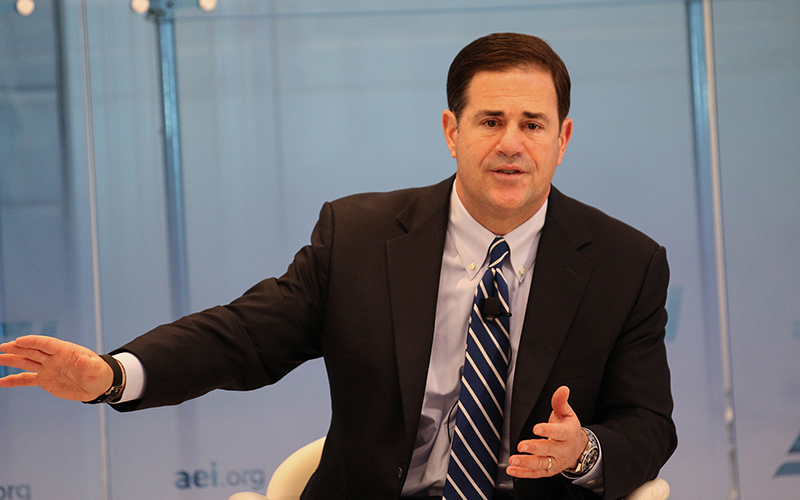WASHINGTON – Methamphetamines were the drug of choice 10 years ago when Arizona began working on a coordinated program to keep drug-addicted parents and their newborn children together.
The concept was not new, said Suzanne Schunk, vice president of family support services at Southwest Human Development, which helped the Arizona Department of Child Safety develop the program. What was new was combining a wide array of sobriety and child welfare programs into a unified approach that would not overwhelm parents as they grappled with the dual challenges of an addiction and a newborn.
“It has been highly successful in preserving families,” Schunk said Friday.
Today, opioids are the drug of choice but the solution is the same: Keeping families together to give children the stability they need while giving parents the help they need to get sober without fear of losing their child.
Gov. Doug Ducey touted the program, among others, in Washington Thursday as the keynote speaker at an American Enterprise Institute program on the opioid epidemic and its effect on foster care families.
Ducey praised the Substance-Exposed Newborn Safe Environment – or SENSE – program during his presentation.
“In the past, the child would be removed and returned after sobriety had been achieved,” Ducey said. “But we felt this could force parents to choose between their children and getting help.”
The pilot program started in Maricopa County before the opioid crisis, and has since expanded across the state.
Darren DaRonco, a spokesman for the Department of Child Safety, said that SENSE is used when a baby born at a hospital is found to have been exposed to opioid use by the parent.
-Cronkite News video by Dani Coble
Prospective parents can even report themselves before a birth to seek help. One advantage of the program, Ducey said, is that it removes the fear that a child will automatically be taken away from a parent who self-reports.
If a family participates, home visits can start as soon as 12 hours after a case is reported.
DaRonco said that each case is different and not all families are kept together. After an investigation by a DCS specialist, it is determined whether the child should remain at home through SENSE, or be placed elsewhere.
But unless a parent doesn’t show interest in the program – and the sobriety that comes with it – or there are other issues like domestic violence, keeping the child at home is often the preferred option.
“Out-of-home care is the last possibility,” DaRonco said, referring to foster care or next-of-kin care. But he noted that “every family has unique circumstances.”
Schunk said that not every family agrees to participate in SENSE, “nor is even appropriate for this program. That is a decision made by DCS.”
Elizabeth Bartholet, a family law professor at Harvard Law School and a panelist at the event, had general praise for the Arizona program. But she also expressed reservations, saying that foster homes should not be automatically discounted, she said.
“We can’t wait, we have the science telling us that abuse or neglect early in a child’s life is incredibly damaging and has lifelong consequences,” Bartholet said. Too many child-welfare programs today are “too oriented to parent rights, parent power and keeping kids at home, even when there’s a high risk of them being abused and neglected.”
While keeping a child within the family is the highest priority, followed by next-of-kin and foster homes, Schunk said that children who remain in the home are monitored constantly to ensure their safety.
“Numerous drug tests take place,” she said. “We know if a family is cooperating or not, and we know if the baby is safe or not.”
